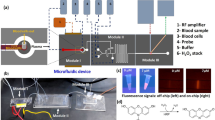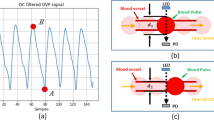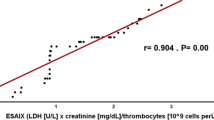Abstract
OXYHAEMOGLOBIN is generally regarded as the product of haemoglobin and oxygen gas. In the course of investigating hormone effects on intracellular oxidation-reduction potential we have found that deoxygenated haemoglobin can become oxygenated to oxyhaemoglobin in the complete absence of atmospheric oxygen. The experiments were performed on fresh (heparinized) red blood cells, washed free from plasma and resuspended in a balanced phosphate–glucose–saline buffer (pH 7.3). The cell suspensions were thoroughly deoxygenated with 100 per cent nitrogen, and air was rigidly excluded from the incubation systems throughout. Nicotinamide–adenine dinucleotido (NAD+) (Biochemica Boehringer, Mannheim, Germany) was added to the suspending medium. After incubation in a 37° water-bath for varying lengths of time a striking colour change was noted from the dark tinge of deoxygenated haemoglobin to the bright red of oxyhaemoglobin. The speed and completeness of the transformation depended on the extracellular NAD+ concentration relative to the packed-cell volume. In ‘thin’ suspensions (low packed-cell volume) the visual impression could be confirmed spectroscopically (Fig. 1). On haemolysing the cells, either with a trace of saponin or by freezing and thawing, the oxyhaemoglobin, now in free solution, reverted to deoxygenated haemoglobin.
This is a preview of subscription content, access via your institution
Access options
Subscribe to this journal
Receive 51 print issues and online access
$199.00 per year
only $3.90 per issue
Buy this article
- Purchase on SpringerLink
- Instant access to full article PDF
Prices may be subject to local taxes which are calculated during checkout
Similar content being viewed by others
References
Dormandy, T. L., J. Physiol. (in the press).
Mitchell, P., Nature, 191, 144 (1961).
Jahn, T. L., J. Theor. Biol., 2, 129 (1962).
Author information
Authors and Affiliations
Rights and permissions
About this article
Cite this article
DORMANDY, T., MUNRO, J. Oxyhaemoglobin without Oxygen. Nature 206, 410–411 (1965). https://doi.org/10.1038/206410a0
Published:
Issue date:
DOI: https://doi.org/10.1038/206410a0



